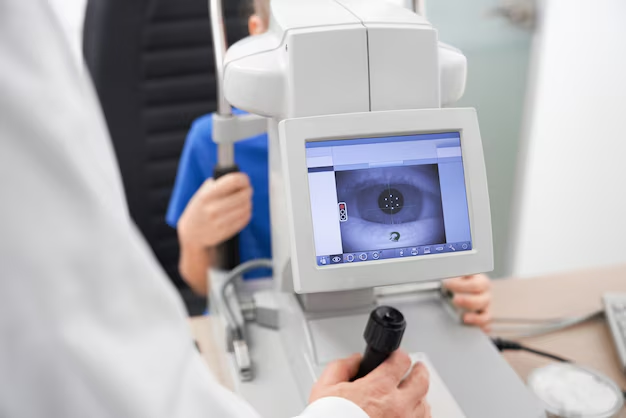Understanding the Duration of Cataract Surgery: What to Expect
Cataract surgery is a pivotal procedure for those experiencing the clouding of their eye's natural lens. Although the thought of surgery might sound daunting, modern advancements have rendered cataract surgery as one of the safest and most common medical procedures worldwide. One of the most frequent questions concerning this procedure is: "How long does cataract surgery take?" Let's delve into this question and explore related aspects to provide a comprehensive understanding.
The Procedure: Short and Sweet
How Long Does Cataract Surgery Really Take?
Cataract surgery typically takes between 10 to 20 minutes per eye. This may come as a surprise to some, given the complexity associated with the term ‘surgery.’ The efficiency and rapid nature of this procedure are due to technological advancements and a streamlined surgical process that has been refined over years.
Preparing for Surgery: The Pre-Operative Process
Before the actual surgery, several preparatory steps are involved, which can add time to the overall experience:
- Preoperative Testing: This includes an eye examination to measure the curvature and size of the cornea, along with determining the size and shape of the eye. Eye ultrasound might also be performed to aid in selecting the correct lens implant.
- Discussion with Healthcare Professionals: Expect a consultation to discuss the risks, benefits, and alternatives of cataract surgery.
- Medication Administration: Eye drops may be given preoperatively to dilate the pupil and prepare the eye.
These preparations can add an additional 30 to 60 minutes to the total time spent at the facility.
The Day of Surgery: What It Involves
On the day of surgery, while the operative part is brief, several non-surgical elements extend the visit:
- Check-in Process: Completing necessary paperwork and administrative procedures can take some time.
- Local Anesthesia Preparation: Typically, eye drops or an injection are used to numb the eye. This ensures that the procedure is painless, contributing to the overall success and comfort.
- Recovery Time: Post-operation, you will rest in a recovery room. Staff will monitor you until you’re fully awake and feeling well enough to leave, which takes about 30 minutes to an hour.
Potential Extended Time for Complex Cases
While most surgeries adhere to the described timeline, certain cases might require extra time. For instance, if severe eye conditions or complications like dense cataracts are present, the procedure might extend beyond the average duration.
What Happens After Cataract Surgery?
Immediate Recovery and Follow-Up
Cataract surgery is typically an outpatient procedure, meaning you can go home the same day. However, there are several follow-up activities to consider:
- Postoperative Care:
- Expect to receive prescribed eye drops to prevent infection and aid healing.
- You'll need to schedule follow-up visits to monitor recovery progress.
Adjusting to Your New Vision
It's remarkable how swiftly you may notice an improvement in vision post-surgery. However, complete stabilization of vision can take several weeks. It is vital to adhere to care instructions to ensure optimal healing.
Exploring Related Considerations
As you prepare for cataract surgery, several related aspects merit attention:
Choosing the Right Time for Surgery
Timing can depend significantly on the level of vision impairment impacting your daily activities and quality of life. Discussing with an eye specialist about how cataracts affect you can guide the timing decision. Many people pursue surgery when they begin struggling with driving, reading, or watching television.
Types of Intraocular Lenses (IOLs)
What type of lens implant will you receive? Understanding IOLs can be instrumental in setting postoperative expectations. There are various options:
- Monofocal Lenses: Designed for a single field of vision, typically distance.
- Multifocal Lenses: Offer clear vision at multiple distances.
- Toric Lenses: Correct astigmatism.
Factors Influencing Surgery Timing and Choice
While cataract surgery is largely effective and low-risk, personal factors such as overall eye health, pre-existing conditions, and patient lifestyle will influence timing and lens selection. Discuss these elements in detail with your healthcare provider to align the surgery with your personal vision goals.
Practical Tips for a Smooth Experience
To help you navigate the journey, here’s a handy list of tips and key takeaways:
- 🗓 Schedule Wisely: Choose a day when you can relax afterward.
- 🚗 Arrange Transportation: Ensure someone can drive you home post-surgery.
- 🕶 Pack Sunglasses: Sunglasses can help with post-surgery light sensitivity.
- 💊 Follow Medication Instructions: Use prescribed eye drops and medications as directed.
- 👁 Attend All Follow-Ups: Don't skip any postoperative appointments for optimal recovery.
Final Thoughts on Cataract Surgery
Cataract surgery is a remarkably quick and effective procedure that dramatically improves vision and quality of life. While the surgical time is brief, success hinges on thorough pre-operative planning and adherence to post-operative care instructions.
Remember, embarking on this procedure is a journey to clearer sight, freeing you from the limitations cataracts impose. By aligning with your healthcare provider, you can navigate each step confidently, knowing you are on the path to optimal visual clarity.
With preparation, a smooth surgical experience, and diligent recovery practices, you'll be well on your way to enjoying the vibrant world around you without the haze of cataracts.
